Techniques for choosing fighting cocks is the key factor to finding a real fighting cock, helping you win in the top matches at 8K8. Choosing a fighting cock is not only based on feelings but also requires a deep understanding of the appearance and innate characteristics of the cock. This article will guide in detail the selection criteria to help cockfighters feel confident when entering the arena.
The importance of the right techniques for choosing fighting cocks
Choosing the right fighting cock is the first and most important step to building an invincible fighting cock. A good cock not only helps you win but also shows the professionalism of the player at prestigious arenas like 8K8.
Overall assessment of appearance and demeanor
Techniques for choosing fighting cocks is not only based on appearance but also requires a combination of practical experience and in-depth knowledge of the chicken breed. To become a good cockfighter, you need to understand that an excellent fighting cock must have a balance between physical, mental, and breed.
Appearance and charisma are the first factors to consider when applying techniques for choosing fighting. A rooster with a majestic and confident demeanor will often show superior strength in fights.
| Standing posture | A good fighting cock stands straight, chest out, head held high, showing bravery. |
| Eyes | Bright, alert eyes, showing no signs of fear or lethargy |
| Hair | Smooth, body-hugging coat that doesn’t fluff or lack vitality |
| Reflex | Chickens have quick reflexes and move flexibly, especially when stimulated. |
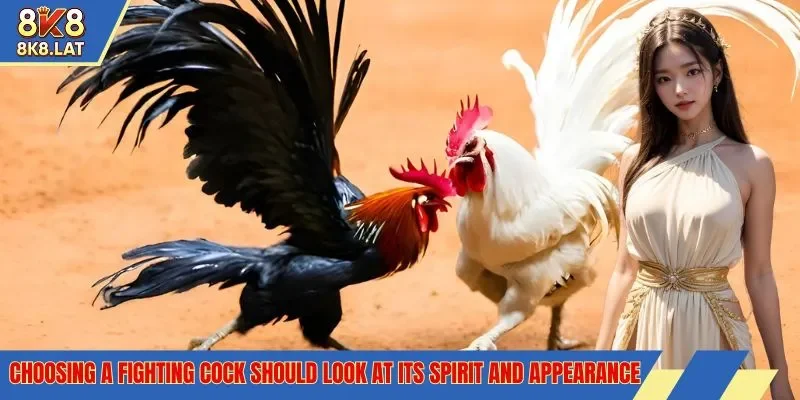
Look at the face, eyes and beak of a chicken
Head, face, eyes and beak are important parts to help identify the potential of a fighting cock techniques for choosing fighting cocks based on these characteristics requires finesse and careful observation.
- Head shape: The chicken’s head should be moderately large, well-proportioned, not too long or too short.
- Chicken eyes: Bright eyes, small pupils, clear eye rims, showing intelligence.
- Chicken beak: The beak is short, hard, and slightly curved, helping the chicken attack powerfully and accurately.
- Cockscomb:A bright red comb, standing straight and not sagging, is a sign of good health.
Analysis of body structure, neck, back, wings
Body structure is a key factor in the technique of selecting fighting cocks, because it determines strength and speed when fighting. In addition, a balanced body also directly affects the endurance and ability to withstand blows of the fighting cock throughout the match.
- Body: The chicken’s body should be firm, with a broad chest, deep flank, and well-developed muscles.
- Chicken neck: Long, strong neck, helps chickens to attack flexibly and dodge well.
- Back and wings: Back straight, wings long and close to the body, helping the chicken keep balance when fighting.
- Tail: Long tail, spread evenly, helps the chicken keep balance and increase strength when striking.

The art of reading the feet and decoding the scales of precious fighting cocks
Chicken legs and scales are one of the most important factors in techniques for choosing fighting cocks, because they reflect strength and fighting potential. A pair of strong legs and precious scales can be a sign of a future divine chicken.
How to see the overall shape of a pair of chicken feet
The shape of the chicken’s legs directly affects its ability to strike and endure in a fight techniques for choosing fighting cocks based on chicken feet, pay attention to the following points:
- Leg shape: Chicken feet should be slender, moderately long, not too thin or too rough.
- Chicken spurs: Spurssharp, hard, balanced position, helps the chicken to launch dangerous attacks.
- Flexibility: The chicken’s legs should move quickly, without stiffness or limping.
- Toes: Long legs, sharp nails, help chickens grip the ground well when fighting.
Identify rare chicken scales, signaling talent
Chicken scales are considered as “maps” to predict the talent and strength of fighting cocks. Below is a summary table of common precious scales and their meanings:
| Scale name | Characteristic | Meaning |
| Scales of Heaven | Large scales, located near the spur, square or round | Chicken has strength, dangerous attacks |
| Earth-covering scales | Small, even scales running from knee to spur | Chicken is durable and can take a beating well. |
| Large scale armor | Large, overlapping scales in the inner row | Chickens have superior strength and are less susceptible to injury. |
| Intertriginous scales | Scales connected together in a long row | Smart chicken, good at dodging attacks |
Note when choosing chicken to avoid common mistakes
When applicable techniques for choosing fighting cocks based on the scales, it is necessary to avoid common mistakes to avoid choosing poor quality chickens. A good chicken not only has beautiful scales but also needs health and skills. If you are just starting out, learn from experienced cockfighters.
Choose a good fighting cock through its feather color and characteristic crowing sound.
Coat color and crowing are complementary factors in techniques for choosing fighting cocks, helps identify the qualities of the fighting cock. Chickens with shiny feathers and outstanding colors are often in good health. The loud, high-pitched crowing shows confidence and strength.
- Feather color: Prioritize chickens with red, iridescent, or black feathers, because they are usually healthy and durable.
- Crowing: Long crowing, resounding sound, without interruption is a sign of a potential fighting cock.
- Combining other factors: Coat color and crowing sound must go hand in hand with appearance and scales to ensure quality.
The techniques for choosing fighting cocks and young chickens
Choosing a young fighting cock or chicken is a long term investment techniques for choosing fighting cocksThis stage requires patience and experience.
- Consider the lineage: Chicks from high-performing parents often inherit superior qualities.
- Observe gait: A young chicken with a steady, unshaking gait is a sign of good health.
- Reflex test: Young chickens that have quick reflexes and are not afraid when stimulated usually have great potential.
- Refer to 8K8: The cockfighters often share their experiences in choosing quality young chickens.
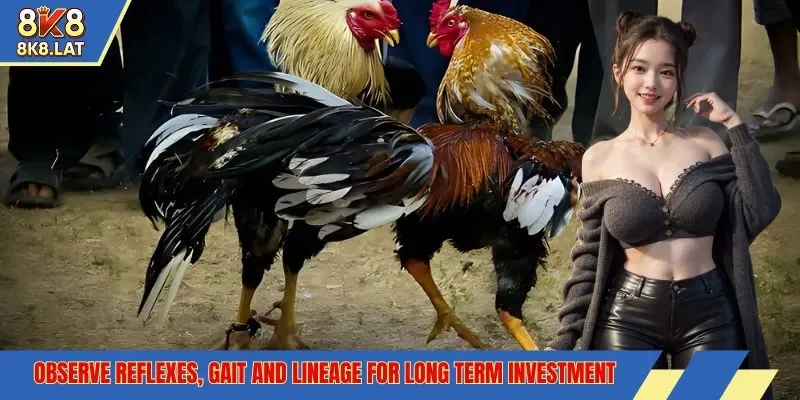
Distinguishing popular fighting chicken breeds and their characteristics
Each breed of fighting chicken has its own unique characteristics that directly affect the technique of choosing chickens. Understanding these characteristics will help players make more accurate decisions. Below are some popular breeds of fighting chickens.
- Vietnamese fighting cock: High endurance, dangerous attacks, suitable for harsh arenas.
- Asil: Muscular body, strong attack, suitable for short fights.
- Peruvian: Fast, good dodging technique, but needs careful training.
- Kelso Chicken: InformationSmart, flexible, often chosen at 8K8 arenas.
Mistakes to avoid when starting to ctechniques for choosing fighting cocks
Newcomers often have difficulty applying techniques for choosing fighting cocks, leading to incorrect decisions. This can easily cause them to choose poor quality chickens, affecting the results of the competition.
- Relying on appearance alone: Not judging the whole can miss important factors like scales or charisma.
- Lack of experience: Not consulting with experienced cockfighters can easily lead to mistakes.
- Ignore health: A beautiful chicken with poor health will not be able to fight well.
- Not checking carefully: Rushing to choose chicken without careful consideration can easily lead to failure.
Conclude
Techniques for choosing fighting cocks is an art that requires a combination of knowledge, experience, and sophistication. At 8K8, cockfighters can learn and apply these secrets to find undefeated fighting cocks. From evaluating appearance, looking at scales, to distinguishing breeds, every step plays an important role.

 Philippines Cockfighting Rules: A Beginner’s Guide
Philippines Cockfighting Rules: A Beginner’s Guide 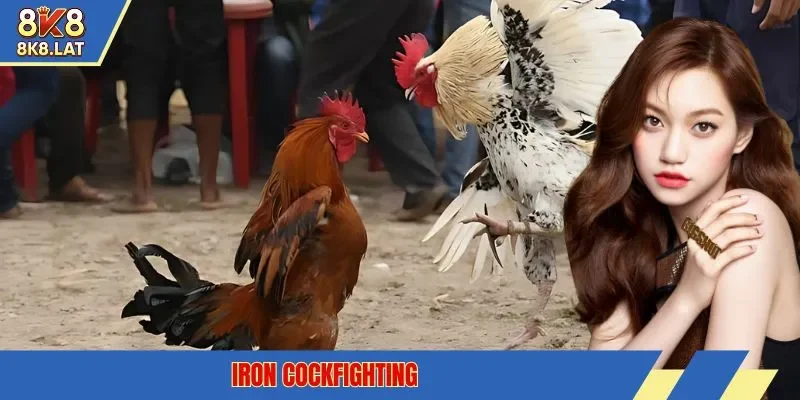 Iron Cockfighting At 8k8: Prestigious Battle Arena
Iron Cockfighting At 8k8: Prestigious Battle Arena 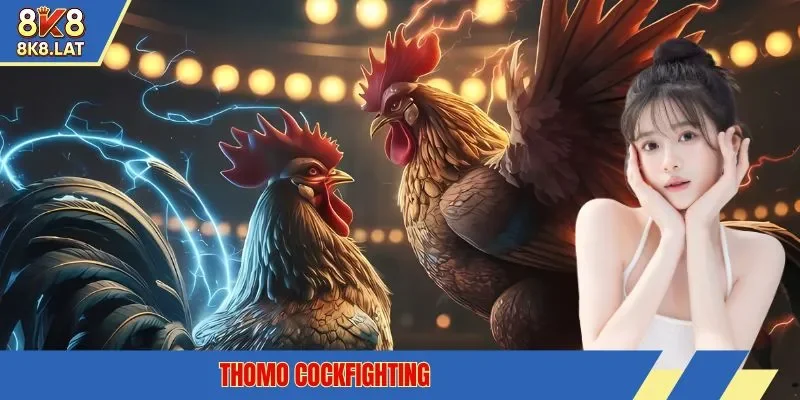 Thomo Cockfighting 8k8: Int’l Standard Arena Drama
Thomo Cockfighting 8k8: Int’l Standard Arena Drama 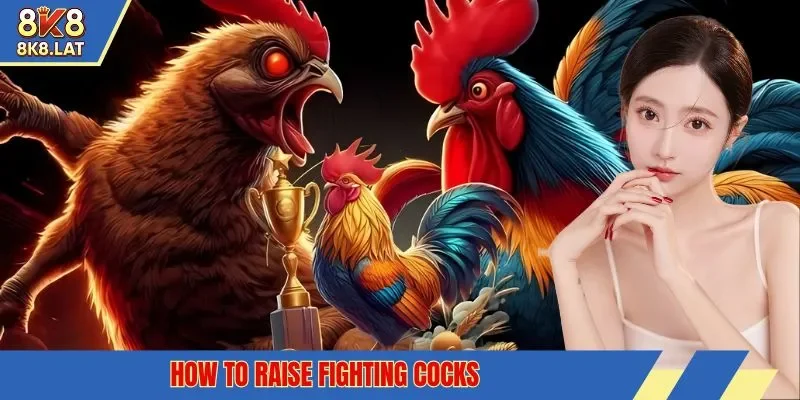 Best Way on How to Raise Fighting Cocks Effectively
Best Way on How to Raise Fighting Cocks Effectively